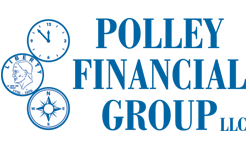
The Endless Debt Fret
Brian S. Wesbury, Chief Economist | Robert Stein, Deputy Chief Economist
Date: 1/14/2019
For the more than three decades we have been involved in analysis of the economy, one nagging constant has been pessimistic prognostications over the U.S. debt. Now once again, debt is the news de jour. Consumer, business, and government debt are all at record highs, and, therefore, the theory goes, the economy is tempting fate.
We have some very basic problems with this theory. Debt has been rising for decades, as it usually has since the US was founded more than 200 years ago. But just like debt, assets, incomes and profits have hit record highs too. While it’s true that debt is usually at a record high when a recession starts, debt itself doesn’t cause recessions. And debt itself doesn’t cause growth either. If it did, then Puerto Rico and Greece would be economic powerhouses; instead, they’re basket-cases.
Debt is a transfer of assets from someone who wants to spend less than they earn today, to someone who wants to spend more. When this debt fuels investment in entrepreneurial ventures that boost growth, then debt helps lift the economy. But if spendthrift consumers or governments borrow money for non-productive activities, then debt goes up while production stagnates. That’s a problem, as there are no extra goods and services to offset the cost of larger debt payments as they come due.
The other thing about debt is that it can sometimes spur on more production. Imagine you wake up tomorrow and are $10,000 more in debt. Are you going to work more hours or fewer to pay that off?
In other words, investors should neither be “debtophobes” or “debtophiles.” Instead, investors should be agnostic about debt, looking into the underlying reasons for the debt as well as its sustainability relative to asset levels and income.
Take, for example, the national debt of Japan, which is about 235% of GDP. That’s a lot of debt! But Japan’s interest rates have been hovering around 0% for years, which means the carrying cost of the enormous debt is minimal (for now).
Another example is the US consumer. Household debts are at a record high of $15.9 trillion, beating even the $14.7 trillion record set in early 2008 before the financial crisis and Great Recession. This includes mortgages, home equity loans, student loans, auto loans, credit card debt,…etc. So, the thinking goes, if we had a crisis after the last record high and now we’re even higher, there must be a new crisis lurking around the corner.
The problem with this theory is that it ignores asset values. Back at the old peak in household debt in 2008, debts were 19% of assets; now they’re 12.7% of assets, the lowest share since the mid-1980s. Meanwhile, households’ debt service is the lowest share of after-tax income since at least the 1980s. Corporate debt, too, is low relative to assets in historical comparisons, and interest costs as a percent of profits are well within the normal range.
Faster growth in recent years may have coincided with higher debts in some areas, but it wasn’t caused by higher debts. Growth has picked up thanks to a mix of better policies and entrepreneurship. Bottom line is we don’t see anything about the current level of debt that’s going to cause a recession anytime soon. Let the pouting pundits kick and scream but focus your attention on more important things.
This report was prepared by First Trust Advisors L. P., and reflects the current opinion of the authors. It is based upon sources and data believed to be accurate and reliable. Opinions and forward looking statements expressed are subject to change without notice. This information does not constitute a solicitation or an offer to buy or sell any security.
Polley Financial Group
4500 South Lakeshore Drive, Suite 300
Tempe, Arizona 85282
Phone: 480-921-7706
Fax: 877-577-7706
Located inside: 2799 S 4th Ave
Yuma, Arizona 85365
Phone: 928-782-7706
Fax: 877-577-7706

